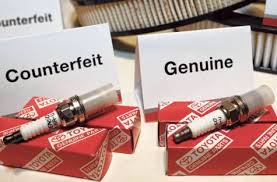The incidence of numerous counterfeit car parts flooding the market has become a serious problem in recent years. Counterfeit or imitation car parts typically aren’t very easy to spot because counterfeit part makers work long and hard to fool consumers. This makes it difficult to avoid them. However, there are a couple of things you can keep in mind to help you, at least to a reasonable extent, identify these fake car parts. Jumia Travel, the leading online travel agency shares 5 of these things to help you identify and avoid counterfeit car parts.
Extremely Large Difference in Prices
Sometimes the cheapest deal isn’t always the best, especially when buying car parts. If you do your research and when in the market for parts you are given a price that is outrageously low, the car part is most likely fake. You should be suspicious.
Buy Your Parts from Authorized Dealers and Retailers
This might be a more expensive option but in the long run, it’s worth it. Most of us already know this but we still manage the cheap fake parts because they get our cars moving. However, though these fake parts temporarily fix the problem, they also cause bigger problems in the meantime. These fake parts are not built to your car’s specification, so they tend to lead to mechanical problems, system breakdowns and safety problems. Not to mention the fact that you still end up spending a fortune on them, because they don’t last long and need to be constantly replaced. It’s better to set your car aside while you save up for the original part or rework or fix the faulty part (if it can be fixed) rather than opting for cheap fake parts. However, avoid these ‘salvage parts’ for risky parts like distributor, alternator or brakes.
Check for Distinct Marks
In an attempt to check the activities of counterfeit part producers, some brands have now started affixing distinct marks on their car parts. This mark will assist you in distinguishing genuine products from counterfeit products. You can search online for information on these distinct marks or ask authorized dealers and retailers about it.
Inspect the Packaging
If the packaging appears flimsy and of a low quality, if it lacks a brand name or logo, has graphics or a name similar to but not the exact name of the original manufacturers you’re used to seeing, it’s most likely fake. Counterfeiters often try as much as possible to use the colours, artwork and type fonts similar to the original packing, but there would always be slight variations to give them away once they are properly inspected.
Get a Trustworthy Mechanic
Most times we tend not to buy these parts ourselves. Our mechanics handle the whole thing, we only give them money. Typically, it’s advisable that you are as involved as possible in the servicing or repair process of your car and if possible go along with these mechanics to purchase the parts so you can monitor their activities. However, this is not always possible, so you need to ask around, search diligently and find a mechanic you can trust, not a mechanic that will charge you for the price of the original part and then buy the fake part and pocket the leftover cash. Get a trustworthy mechanic who knows what he’s doing and is unlikely to extort you with fake parts.











